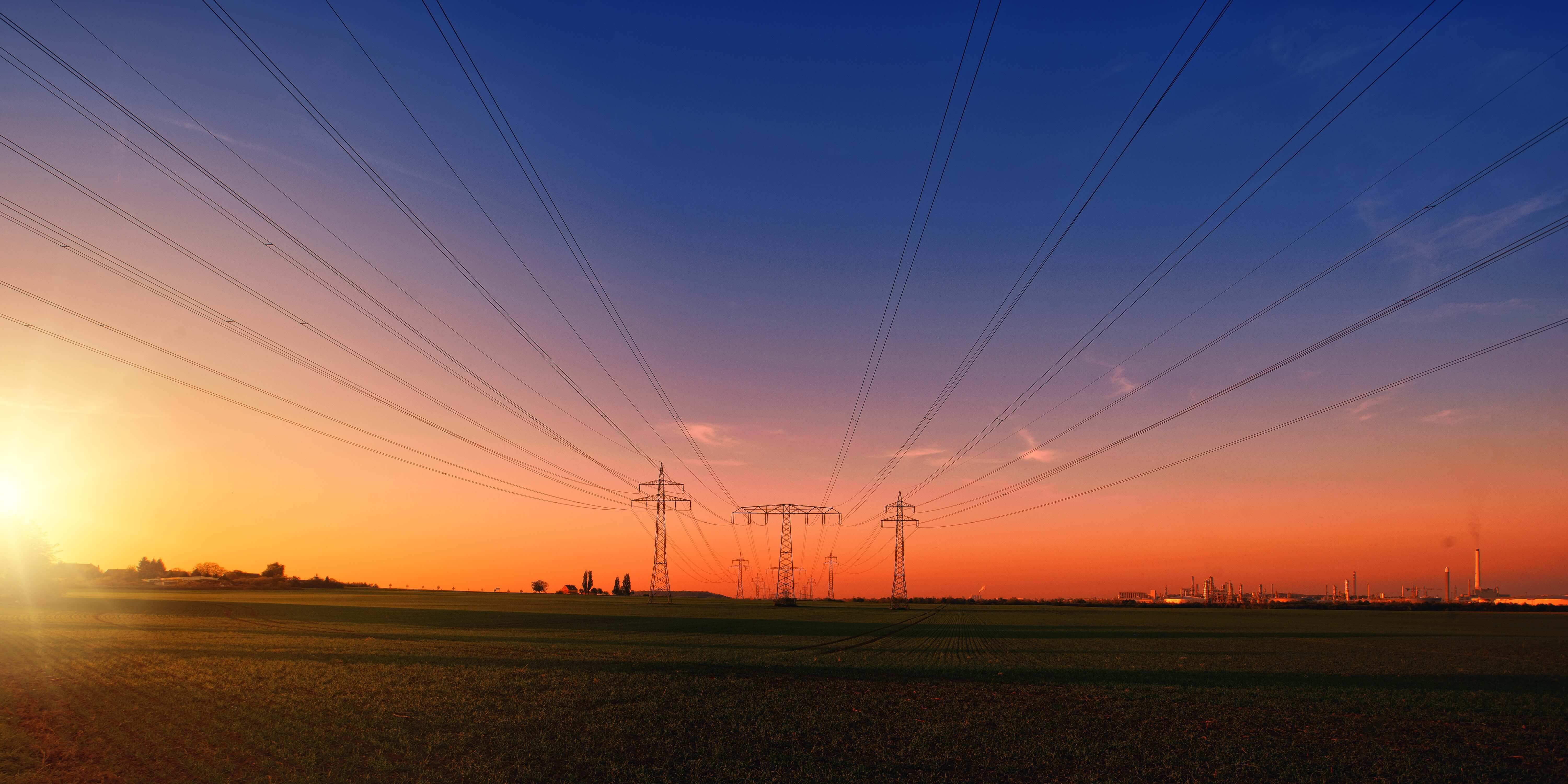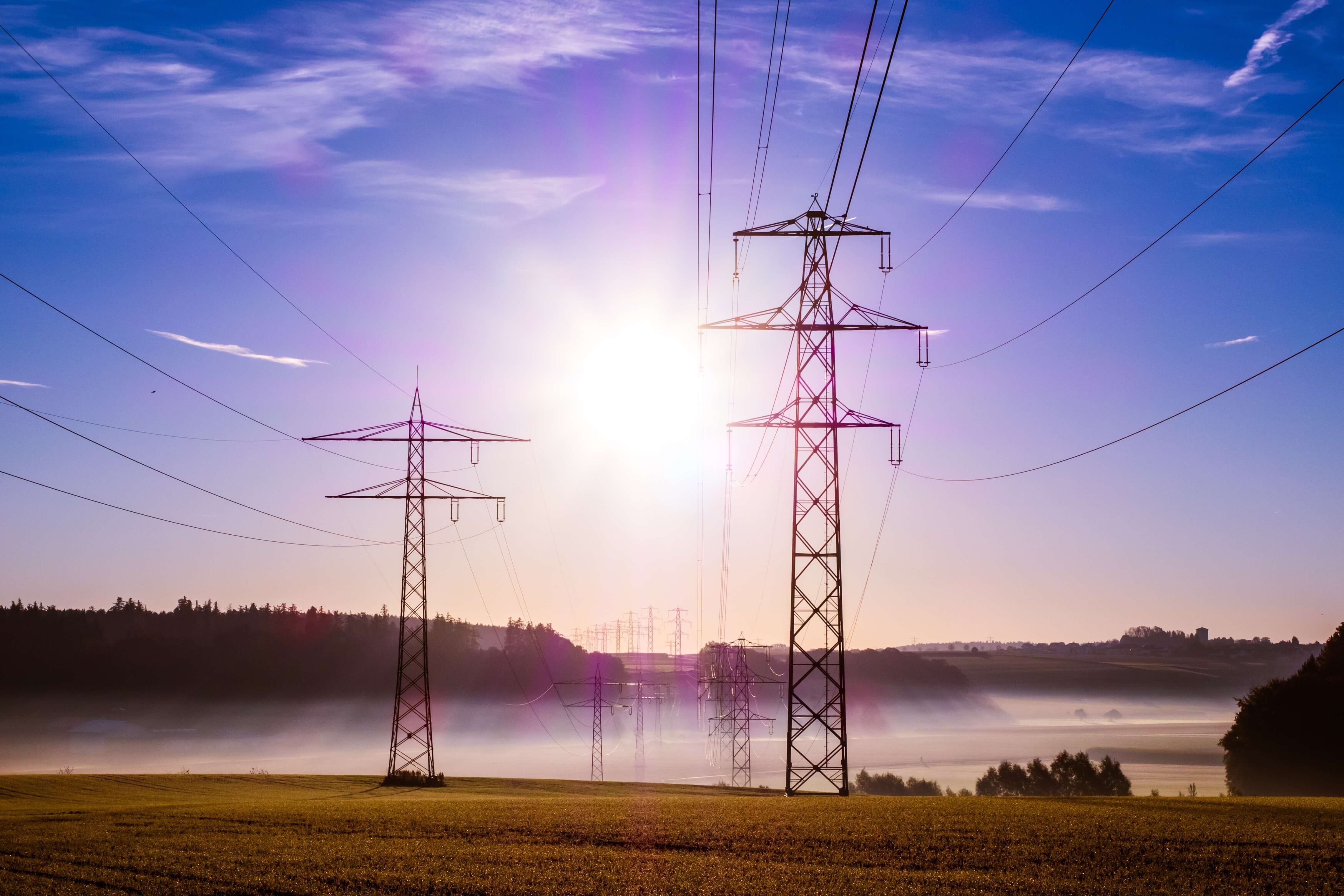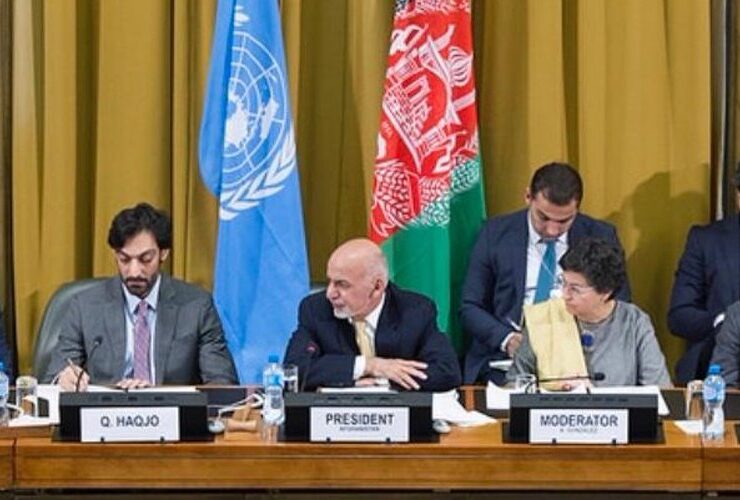Power Sector Reform in Afghanistan

Barriers to Achieving Universal Access to Electricity
Authors: Mohsin Amin | David Bernell
A complete version of the study was published in the International Journal of the Political, Economic, Planning, Environmental and Social Aspects of Energy. The authors have shared a condensed version with the readers of Business DNA. For the full version, see www.businessdna.af.
Source: Energy Policy Journal, Volume 123, December 2018, Pages 72-82
Abstract
The electric power sector in Afghanistan suffers from numerous challenges. Roughly 70% of the population has no access to electricity, and 90% of those without electricity live in rural areas. The vast majority of its power is imported from neighboring countries, and is often subject to outages. Since 2002, more than $4 billion has been spent on Afghanistan’s electrification in cooperation with international funders, yet this has not increased electrification to the level anticipated, particularly in rural areas. This study uses the Institutional Analysis and Development framework to examine the policy and institutional barriers to expanding the power grid. Looking at major laws, policies and actors that comprise the energy sector, and the patterns of interaction among them, this study finds that ambiguity, overlaps and contradiction in the scope of work of five government ministries exacerbates the current challenges. Moreover, the lack of a coordinated development agenda among the government of Afghanistan and international partners has led to fragmented planning and implementation of projects, inadequate prioritization of investments, and much of the work being done by consultants or short-term contractors. The result has been low rates of electrification, diminished institutional capacity and minimal private sector involvement in the energy sector.
Institutional analysis: a framework
To analyze Afghanistan’s electric power sector, this study employs Elinor Ostrom’s Institutional Analysis and Development (IAD) framework. The IAD framework is considered to offer an excellent fit with which to examine this problem, which focuses on the institutional arrangements and interactions that affect the electricity sector.
The external variables: material conditions, community attributes, and rules-in-use
The material conditions of the country, along with key attributes, play an important role in the development of the electric power sector in Afghanistan. There are also several laws and plans that have been adopted to govern the sector. These elements comprise the external variables in this application of the IAD framework. For more, see the full paper.

The action arena: actors
The domestic institutional participants in Afghanistan’s energy sector consist primarily of the national power utility, Da Afghanistan Breshna Sherkat (DABS), and several key government ministries, the Ministry of Energy and Water (MEW), the Ministry of Mines and Petroleum (MoMP), the Ministry of Rural Rehabilitation and Development (MRRD), the Ministry of Finance (MoF), and the Ministry of Economy (MoEc). There is also an Inter-Ministerial Commission for Energy (ICE).
In addition to domestic agencies, there are numerous foreign funders and development partners that work with the government of Afghanistan. The US government, particularly USAID and the Army Corps of Engineers (ACE), have had a significant role in the country’s energy sector.
Patterns of interaction
The rules-in-use, along with the institutional missions and organizational structures of the many participants in Afghanistan’s energy sector, comprise a framework designed to govern the sector’s operations.
However, the ways in which the various participants in the system actually interact with one another within the context of the legal and institutional structures does not always reflect their formal mandates and goals. Such structures present opportunities, incentives and constraints that may only reveal themselves over time, leading to outcomes that are inconsistent with the intentions and expectations of those who developed those laws and institutions, and those who take part in various programs and projects. In other words, as Yogi Berra famously put it, “In theory, there should be no difference between theory and practice, but in practice, there is.” The case of Afghanistan’s power sector reforms exhibits this logic quite clearly, as the patterns of interaction have revealed several challenges and unintended outcomes, including two key areas addressed here that have inhibited the goal of expanded electrification: the overlap and contradiction in agency mandates and jurisdiction, and the lack of a unified development agenda and implementation plan for the energy sector.
Overlap and contradiction in mandates and jurisdiction
Among the agencies in Afghanistan that are engaged in the energy sector, there are often overlaps and in some occasions contradictions in mandates, jurisdictions and scope of work, in particular with regard to MEW, DABS, MoMP and MRRD. With regard to MEW and MoMP, the policies and laws that define their respective areas of authority and jurisdiction contain contradictions. An example of this is that the National Integrated Energy Policy stipulates that governance of the use of coal and hydrocarbons are within the scope of MEW. It states that “the scope…covers all forms of energy including mechanical, thermal, chemical and nuclear, and all fuels that are used to generate these forms of energy, including fossil based and renewable” (MEW, 2016). The policy further asserts that all inter-sectoral policy issues such as extraction, generation, transmission, distribution, and usage are also within the scope of this policy. On the contrary, the Minerals Law and Hydrocarbons Law places jurisdiction over coal and hydrocarbons and their extraction and utilization within MoMP’s scope of work.
The real concern arises when the questions arise about how and when resources like coal, oil and gas should be utilized; who should devise plans for their use; which agency is more appropriate to make final decisions; and if work is to be coordinated, what criteria or priorities should govern and streamline the process? This ambiguity has created problems and is likely to create more challenges in the future.
Developing a development agenda
The efforts at power sector reform in Afghanistan have suffered from the lack of a unified, coordinated development agenda. There is no lack of participants, effort and development plans. The problem is one of coordination and prioritization. This is not only a problem arising from the overlaps and gaps explained in the previous section, it is also a result of the fact that policy and projects are often influenced and driven by more than ten international development partners. This has led to a lack of coordination, off-budget project financing, insufficient planning and prioritization of projects, and a process that has lent itself to wasteful spending and unmet goals. At the same time, work is often done by international agencies or consultants, leaving domestic agencies and the local work force without sufficient capacity or training to manage and operate the electric power sector.
Since 2002, energy sector planning efforts have been undertaken by a number of international development partners, through direct funding and technical assistance. This has allowed for significant levels of in-vestment and expertise to be placed in the service of Afghanistan’s power sector. At the same time, the role of the Afghan government has often been marginal, as a plethora of partners have pursued their own agendas and projects. Part of this stems from the inconsistency and overlap of mandates by various agencies such as MEW and DABS. It’s not always clear who international development partners should work with.

Outcomes
The patterns of interaction among actors demonstrate how the establishment of agencies and laws in Afghanistan, and even the willing participation of international funders, has not necessarily led to the desired results. While there has most certainly been progress in the energy sector, there are also significant ways in which goals and expectations were not met, considering the amount of money, time and effort spent. These include:
- Low electrification rate
- Inadequate institutional capacity
- Inadequate prioritization of investments
- Lack of a regulatory framework
- Low level of private sector investment
Low electrification rate
Access to electricity in Afghanistan is still provided to only a minority of the population, roughly 30% in 2016, with 91% of the rural population still lacking access. Per capita consumption of electricity in Afghanistan remains among the lowest in the world, at about 100 kW- hours (kWh) a year (ADB, 2015). This energy consumption is the equivalent of powering a 50-watt light bulb about five and a half hours a day for a year and not using anything else. In addition, reliability remains a pressing issue. Many electricity consumers experience prolonged outages, up to several hours a day, due to load-shedding during periods of peak demand.
Inadequate institutional capacity
The reconstruction of Afghanistan’s energy sector has contributed far less than expected to the institutional capacity of government agencies. Numerous efforts by many development partners have been initiated over more than a decade, but the lack of a coherent and unified agenda for the sector, among both domestic agencies and international partners, has meant that development partners have devised their own initiatives with their consultants and overlooked or rejected the needs and concerns of Afghan ministries. Short-term consultants working for international development partners provided their deliverables (i.e. reports and assessments), but left Afghanistan without building the country’s internal capacity.
Inadequate prioritization of investments
After years of war and isolation, international development partners poured into Afghanistan and invested a great deal of money to rebuild the country, but each donor has had its own plans, goals, and mandates, and in the case of the energy sector, ten development partners were engaged without harmonizing their plans for the sector. The United States alone has spent nearly $3 billion for power-sector projects in Afghanistan since fiscal year 2002 (SIGAR, 2016a). ADB has a current portfolio of $1.2 billion, and more than $500 million in additional funding for the power sector has come from the World Bank, Germany, India, and other sources. Considering the low electrification rate and high dependency on power imports, it is appropriate to question whether investments have been appropriately allocated.
Lack of regulatory framework
Limited institutional capacity and uncoordinated planning, along with pressing concerns that often prioritized short-term needs has left longer-term priorities unmet. One of these priorities is a regulatory framework for the electricity sector. While legislation has addressed the broader energy policy objectives, and the responsibilities of different agencies to meet these objectives, regulation is still required to ensure the smooth, efficient functioning of the sector at the granular level of operations. This regulatory framework does not yet exist, though the development of an Energy Regulatory Authority (ERA) is within the jurisdiction of MEW. Considering that it took seven years to draft, approve and enact the electricity law in the midst of great upheaval—war, massive political change, the establishment of DABS, the influx of development partners, and the construction of power plants, transmission lines, substations, and other infrastructure—the lack of such a framework may not be surprising, but it is a manifestation of the severity of the country’s diminished institutional capacity.
Delayed private sector investments
One important factor that stakeholders in the energy sector agree upon is the importance of the participation of the private sector in developing and enhancing the energy sector of Afghanistan. Ideally, the private sector should have been able to participate when DABS was restructured in 2008, but the electricity law approval took seven years, a key factor that limited the involvement of the private sector. ANDS anticipated participation of the private sector in 2008, but six years later concluded that “an enabling environment for private sector investment in energy sector is measured by the index on the progress of creating such an environment, which should be investor friendly” (MoEc, 2014). However, this outcome could not be achieved, as Afghanistan National Development Strategy (ANDS) stated that, “there is a weak legal and regulatory infrastructure in place to support and monitor investments. Potential investors cite unclear policies and corruption as a barrier to investment.”
Some efforts have taken place to engage Independent Power Producers (IPPs). One was the Sheberghan Gas project that USAID sought to initiate in 2005. Even though USAID held promotional conferences and reached out to investors in several countries, private investors were not interested due to the ambiguous and inadequate nature of the regulatory framework, which left them uncertain as to their business models and opportunities for a return on investment ICE, 2014).
An alternative path?
The poor performance of the electric power sector was not an inevitability. One could plausibly argue that the physical and material conditions in the country, along with ongoing warfare in many areas, should have been expected to severely limit rebuilding and reform efforts throughout Afghanistan. Such attributes have certainly been an important element of the larger environment, and this must be acknowledged. However, these have not been the only determining factors behind success or failure. Institutions and governance matter too, and there is a counterexample in Afghanistan to help demonstrate this. While the electricity sector has been stymied in its development, greater success has been achieved in the telecommunications sector (also referred to as the Information and Communication Technology [ICT] sector). It is considered a success story in terms of attracting private investments, generating revenues for the government, and creating jobs in Afghanistan. In 2002, basic telephone service for Afghans was very limited and there was no mobile phone service carrier. By 2016, however, 90% of the population had access to mobile phones, with more than 20 million customers of mobile phone service carriers and land lines.

Conclusions and policy implications
The patterns of interaction and the outcomes they have led to suggest that policy and practice in Afghanistan’s energy sector are ripe for some changes. To start, any recommendations warrant a visit back to the ANDS of 2008, with the aim of implementing the institutional and regulatory reforms proposed. The ANDS explicitly defined the vision and strategic goal for the energy sector as one that, “provides drivers of growth in the economy with long-term, reliable, and affordable energy based on market-based private sector investment and public sector oversight.” Although barriers have prevented the Afghan energy sector from achieving this vision over the past nine years, the goal itself warrants recommitment.
First of all, there needs to be greater clarity in the roles and scope of work of government agencies. The overlap, confusion and contradiction in the scope of work among government ministries and DABS needs to be addressed to achieve greater effectiveness. The roles of each ministry would benefit from a clear blueprint, which should be developed for every government actor in the sector. This task is important not only to enhance effectiveness, but also to clarify accountability.
A key element to be included in this redefinition of roles is that the Ministry of Energy and Water (MEW) should adopt the role of a policy maker in the energy sector and not a project implementer or regulator. As a custodian of the national energy policy and Power Sector Master Plan, MEW will best serve the sector by providing overall policy and planning direction. While the Electricity Law states that the Electricity Regulatory Authority (ERA) will exist in MEW, it is recommended that the ERA should exist independently, as the agency acting as the lead in policy planning and energy sector development should not also be the regulator of the projects it is championing.
Second, the fragmented, ad-hoc efforts with regard to energy sector planning and implementation need to be addressed. The lack of a unified development agenda on the part of development partners for Afghanistan’s energy sector has limited the ability of stakeholders to achieve the desired results. Hence, it is recommended that the Afghan government and its development partners agree on one unified development plan for the energy sector.
Electrification is a prolonged and challenging process. It requires political will from the politicians and elected officials, appropriate and timely legislation and regulation, strong institutions, and support from the population. Most developed countries took decades to electrify their rural areas, and developing countries well along the path of expanding access to electricity experience difficulties in implementing power sector reforms and applying regulatory governance. Afghanistan is no exception to this pattern. Nonetheless, the ability to learn from the experience of others, as well as its own disappointing results over the past fifteen years, offers Afghanistan an opportunity to overcome some of the barriers hindering the effort to bring electricity to the people of Afghanistan.







